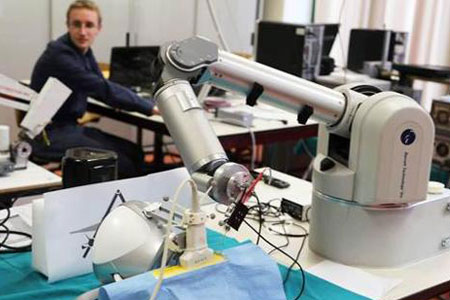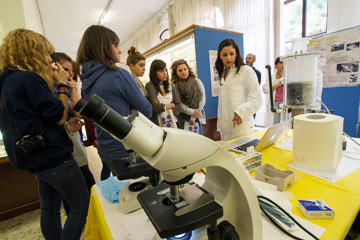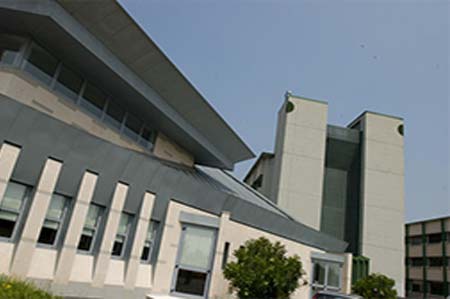Research interests
| Topic |
Description |
Research area |
|
Domain adaptation/generalization
|
Refers to techniques in machine learning that aim to improve the performance of models when applied to new, unseen domains or environments. Domain adaptation focuses on transferring knowledge learned from a source domain (with abundant labeled data) to a target domain (with limited or no labeled data), overcoming the distributional differences between the two. On the other hand, domain generalization aims to develop models that can generalize across multiple domains, making them robust to variations without needing to retrain them on each specific domain. These approaches are particularly important in real-world applications, where models must perform reliably across diverse and changing datasets.
|
Artificial Intelligence
Machine learning
|
|
Multi-modal Learning
|
Aims to integrate and analyze data from multiple sources or modalities, such as images, text, audio, and video, to improve the performance and understanding of machine learning models. By combining information from different types of data, multi-modal learning enables systems to better capture the richness and complexity of real-world information. This field includes challenges such as modality translation, alignment, fusion, effective representation, and more. This area also includes multimodal/visual language models such as CLIP, which connects text and images, DALL-E, which generates images from text, BLIP, designed for image captioning and visual question answering, and large language models like GPT-4 and LLaMA, which extend to multimodal functions for tasks like text-to-image generation.
|
Artificial Intelligence
Machine learning
|
|
Multi-task learning
|
A paradigm where a model is trained to solve multiple related tasks simultaneously, sharing knowledge and representations across tasks to improve overall performance. Instead of training separate models for each task, multi-task learning leverages shared features and parameters, allowing the model to learn generalized representations that benefit all tasks involved. Research in this field focuses on improving task prioritization, balancing task importance, designing more efficient architectures, and dealing with negative transfer—where learning one task harms the performance of others. Additionally, the exploration of methods for task weighting, shared and task-specific layers, and transfer learning techniques are actively being investigated to enhance the versatility and scalability of multi-task models.
|
Artificial Intelligence
Machine learning
|
|
Unsupervised learning
|
Is an approach where models are trained on unlabeled data, with the goal of identifying hidden patterns or structures within the data without predefined labels. It is commonly used for tasks like clustering, dimensionality reduction, and anomaly detection. Open research in unsupervised learning focuses on improving the ability to discover meaningful structures in complex, high-dimensional datasets, often with limited prior knowledge. Key challenges include developing more effective clustering algorithms, improving the interpretability of models that uncover latent structures, and handling high levels of noise or sparsity in data. Additionally, there is ongoing work to bridge the gap between unsupervised learning and other paradigms, such as semi-supervised, self-supervised or contrastive learning, and to enhance the robustness of unsupervised models in real-world applications.
|
Artificial Intelligence
Machine learning
|
|
Semi-supervised learning
|
Combines a small amount of labeled data with a large amount of unlabeled data during training. The goal is to leverage the abundant unlabeled data to improve the learning process, using the limited labeled data to guide the model’s understanding of the task. This approach is particularly useful in scenarios where labeling data is expensive or time-consuming, but there is a large pool of unlabeled data available.
|
Artificial Intelligence
Machine learning
|
|
Supervised learning
|
Is an approach where models are trained on labeled data to learn a mapping from inputs to outputs, enabling them to predict correct labels for new, unseen data. While widely used for tasks like classification, regression, and time series forecasting, open research in this field addresses several challenges. Key questions include how to make models more robust to label noise and inconsistencies, improve sample efficiency to reduce the need for large labeled datasets, and enable effective transfer learning across different tasks and domains with limited labeled data. Additionally, addressing issues of fairness and bias in supervised models, as well as improving scalability to handle large datasets without compromising performance, and attention/transformer-based approaches remain active areas of exploration.
|
Artificial Intelligence
Machine learning
|
|
Biometrics
|
Advancing face, fingerprint, and iris recognition, as well as gait analysis, voice biometrics, and multimodal biometric systems. It also addresses privacy and ethical considerations in biometric applications.
|
Artificial Intelligence
Computer vision
|
|
Deep learning
|
Focuses on training neural networks with multiple layers to automatically learn patterns and representations from large amounts of data. Using architectures such as convolutional neural networks (CNNs) for images, recurrent neural networks (RNNs) for sequential data, and transformers for diverse tasks, deep learning excels at complex tasks like image recognition, natural language processing, speech recognition, reinforcement learning, time series analysis, and autonomous driving.
|
Artificial Intelligence
Machine learning
|
|
Medical image processing
|
Developing techniques to process and interpret medical images, including those from modalities like X-rays, CT scans, MRIs, and histopathology slides. Applications include disease diagnosis, tissue segmentation, organ recognition, anomaly detection, and treatment monitoring. By leveraging deep learning and advanced image processing, medical computer vision enhances diagnostic accuracy, supports personalized treatment, and enables real-time insights in healthcare settings.
|
Artificial Intelligence
Computer vision
|
|
Affective Computing
|
Focuses on designing systems that can detect, interpret, and respond to human internal states, including emotions, moods, motivations, and cognitive states as well as subtle cues like stress, attention levels, and engagement, using inputs from facial expressions, voice tone, physiological signals, and contextual behavior. The aim of affective computing is to enable technology to interact more naturally and empathetically, adapting responses based on a user’s inner state to improve user experience and engagement.
|
Artificial Intelligence
Human computer interaction (HCI)
|
|
Social AI (Social signal processing)
|
Developing AI systems that can perceive, interpret, and respond to human social behaviors and interactions. This field combines knowledge from computer vision, multimedia, psychology, linguistics, and machine learning to enable machines to understand social signals, such as facial expressions, gestures, gaze, voice intonation, and body language. The aim is to create systems capable of engaging in socially aware interactions, recognizing human intentions and social dynamics, and adapting responses accordingly.
|
Artificial Intelligence
Human computer interaction (HCI)
|
|
Activity recognition and understanding
|
Recognizing and understanding individual and group activities, including gaze tracking, facial expression analysis, and human-object and social interaction analysis, with applications in healthcare, assisted living, and public safety.
|
Artificial Intelligence
Computer vision
|
|
Video surveillance and monitoring
|
Detecting anomalies in surveillance footage, identifying events and generating alerts, tracking objects, and analyzing motion. It has applications in smart cities, transportation, and retail environments.
|
Artificial Intelligence
Computer vision
|








 murino
murino univr
univr
